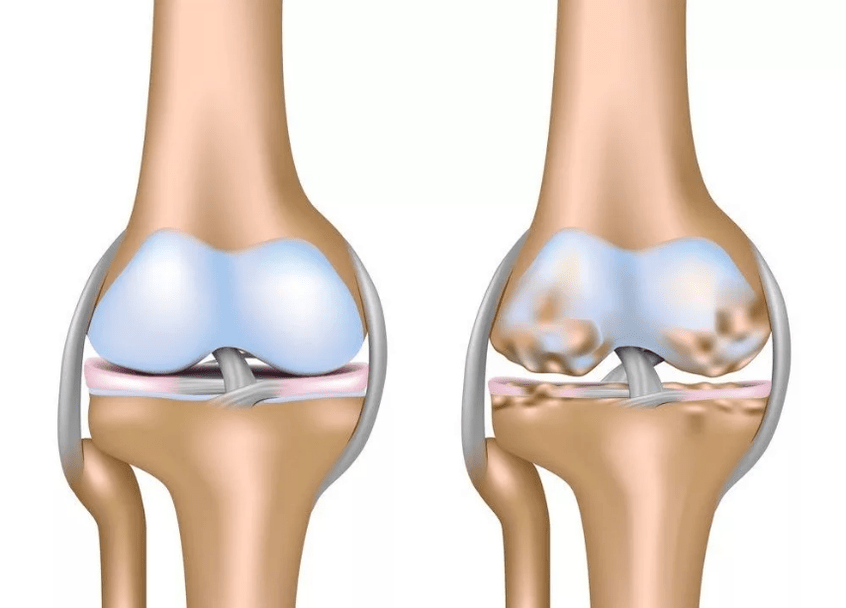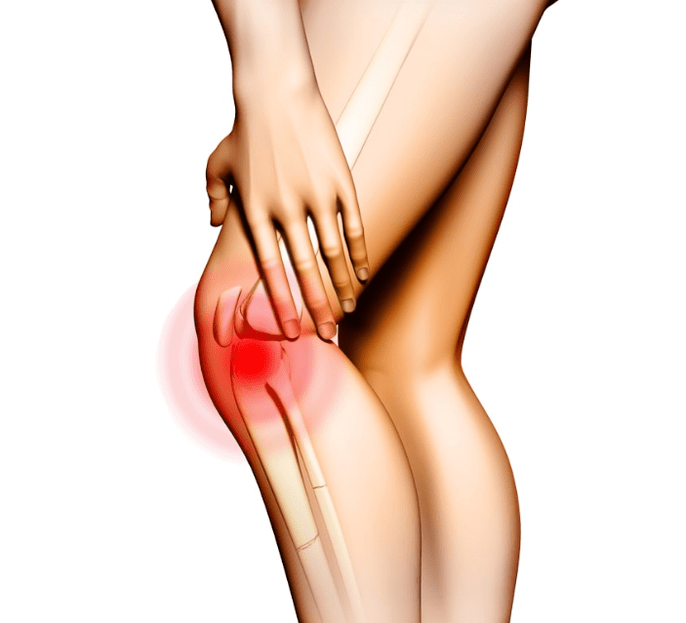Osteoarthritis -A disease that has many factors and related to the degenerative-divophical damage of the joints. One of them is a violation of metabolic processes in the body. The development of osteoarthritis disease is associated with circulatory disorders in the capillaries of the periosteum layers and, as a result, a violation of the nutrition of the cartilage tissue of the joint. At the same time, the structure of the cartilage itself is changing, and becomes thinner, less and less elastic, the softness of the joint surface also decreases. A decrease in the quality of cartilage tissues leads, in turn, to a significant reduction in the volume of synovial fluid and a deterioration in the lubrication of the affected joint.

The popular name of the disease by osteoarthritis is "deposition of salts", which is not true, since in the case of osteoarthritis disease, the cartridge and joint capsules are destroyed, which implies an increase in the load in the affected joint and, as a result, the deformation of the bone. As a result of all this, a crunch appears in the joint, often accompanied by pain, since osteophytes (bone peaks) are formed along the edges of the articular surface, hence the popular name of the disease by osteoarthritis.
Arthrosis, as a rule, mainly affects the elderly. Inexorable statistics indicate that more than 30% of people over sixty and approximately half, at the age of more than seventy years, obtain osteoarthritis.
Although this disease is based on the injury of the articulation cartilage, the disease process is also surprising in neighboring tissues: the synovial membrane, periarticular muscles, the internal layers of the joint bag, bone structures and ligaments.
Symptoms of osteoarthritis
The osteoarthritis of the disease is symptomatic, in the first place, the appearance of severe night pain during a change in the body or other movement. The pain, at rest with osteoarthritis, does not usually appear. One of the symptoms of osteoarthritis can be considered a characteristic crunch in pain with pain. In addition, often, osteoarthritis is characterized by an excessive sensitivity of the sick: the manifestation of pain depending on the changes in the climate.
Basically, osteoarthritis affects the joint and knee joint. A little less often: it affects the joints of the fingers in the arms and legs, as well as the articulation of the ankle. In the initial stage of the disease, the common symptoms of osteoarthritis are short -term and weak pains that do not have a clear location and intensify precisely during physical activity. Bad mobility of the articulation is observed, after a state of rest and a sensation of growing discomfort. With the development of arthritis, the clinical image can deteriorate and over time the pain becomes more pronounced, the characteristic crunch of the joint acquires a constant character, and the increasing pain leads to muscle spasm related to the limitation of the amplitude of the movements in the affected joint. In the posterior stages of osteoarthritis, with damage to the joints of the lower extremities, the lameness appears and the patient has to use crutches or cane.
Stages of osteoarthritis

According to a classification based on radiological characteristics, four stages of osteoarthritis development are distinguished:
- I GRADE - Doubtful osteoarthritis: The pain almost does not feel, manifested periodically and only at the beginning of the movement and quickly passes with its beginning. In the joint, there is a slight limited movement after a state of rest, quickly passing with the beginning of the movement. At the beginning of the joint flexion there is a pronounced crunch, but without pain, so patients rarely go to a specialist in search of help.
- II Grade - Soft osteoarthritis: It is characterized by an increase in pain after great physical effort: they become more acute and longer. Cartilage fabrics in the joint begin to lose their depreciation qualities, osteophytes (bone peaks) are noticed in X stripes and the joint space is reduced. The patient can no longer do any work and their ability to work is reduced. At this stage, the patient is usually looking for a doctor.
- III Grade - Moderate osteoarthritis: It is characterized by its severity and negligence of osteoarthritis. An increase in the accumulation of fluid in the joint cavity and the subsequent growth of bone tissue, as a result, implies the deformation of the joint itself. The patient is tormented by pain even at rest due to the spasm near the muscle joint, while a decrease in the amplitude of the engine is observed. The slightest load in the joint causes suffering to the patient.
- IV Grade - Severe osteoarthritis: It is characterized by significant narrowing of the articular gap, large osteophytes, as well as irreversible bone deformations. The patient can no longer move and only the implementation of artificial articular prostheses can help avoid disability through surgery.
The causes of osteoarthritis
Arthrosis is a consequence of the deteriorated functions of the cartilage tissue due to the changes in its structure. The cartilage fabric of the joint is softened and released, while in the joint, which carries the load, the ulcers begin to form.
The appearance of osteoarthritis disease is divided into two methods:
- Primary Arthrosis (idiopathic) occurs without any visible cause. They can be, as hereditary factors: genetic alterations in the cartilage, congenital defects of the musculoskeletal system, as well as others, in some way: hypermiors of the joints, flat feet, etc.
- Secondary Arthrosis is caused by the development of pathological processes: congenital articulation disorders, injuries, metabolic disorders, various endocrine diseases, specific and non -specific and specific inflammations.
Treatment of osteoarthritis
The effective treatment of osteoarthritis is only exhaustively possible and should be carried out after consultations with a specialist. The main stages of osteoarthritis treatment include:
- Anesthesia taking analgesics.
- Elimination of inflammation with anti -inflammatory medications.
- The restoration of the articulation cartilage tissue with the help of medicines that contain in their composition of medicines individually selected by the course for several months.
In combination with these three stages, physiostosis is an integral part of osteoarthritic treatment: osteolyphegic, electrophoresis, acupuncture and massage. It is not important, at the same time, and compliance with a properly selected diet.
Osteoarthritic prevention
For the prevention of osteoarthritis, it is necessary to minimize the static load in the joints. The constant use of high heel shoes should be avoided. It is not recommended to sit in the position "Put your leg on your leg. "More often, the provisions of sitting and standing must be alternated. If there is excess weight, then you must get rid of it. The best diet for the prevention of osteoarthritis is food for food with a predominance of carbohydrates, vegetables, fruits, which limit protein and calcium intake. Try to avoid weightlifting. In the summer, organize a "vacation" to your joints, swim as much as possible!



































